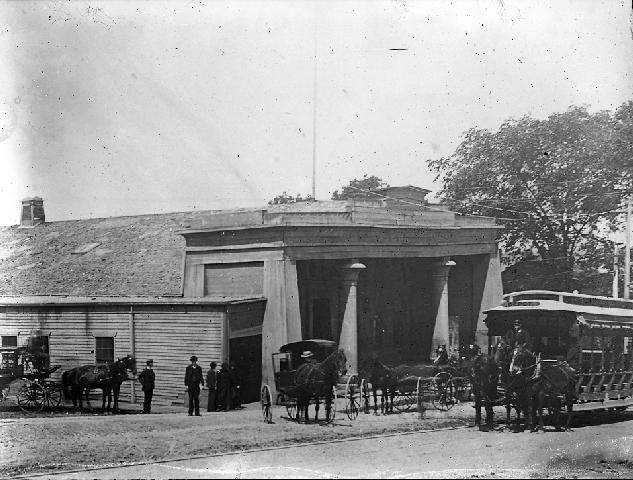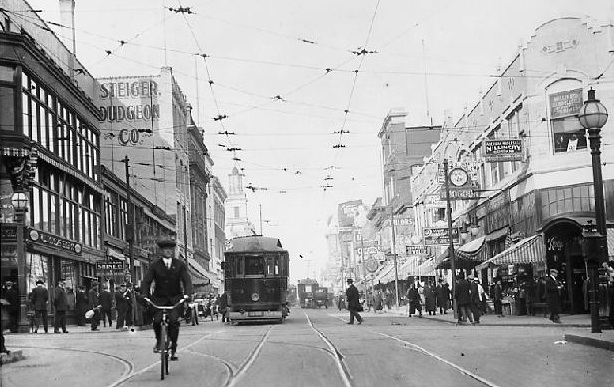The earliest forms of land transportation in the region were Amerindian foot trails. The Amerindians originally used these footpaths not only as ways to travel to and from settlements, but many were game trails or direct routes to water for fishing, sustenance, and travel. Rivers were the original highways of the old world. Since these paths were already deforested and served as unobstructed traffic lanes, they were simply re-used by the first European settlers. The first Europeans walked these paths just as the Amerindians did, and occasionally used horses. As the population burgeoned, the footpaths were broadened to allow horse-drawn carts.

Since the 16th century, Europe had been using a wagonway system to assist in hauling mining payloads. Within a hundred years a wooden flange was added to these routes to keep the wheels on track and this system was the precursor of the stream powered rail system that was to come. The clear, unobstructed path that contained a flange or rail allowed horses to draw wagons with freight of 10-13 tons per trip without worry. In the 18th century, these wooden flanges were taking quite the beating, so as a matter of course they were covered with a sheathing of iron. As payloads increased the wagon “technology” had to keep up. Wheels were made out of iron to handle the heavier loads. Iron on iron also lessened the friction allowing a quicker pace and return. Since the payloads increased, the rails were replaced with completely iron flanges or they would simply collapse. The setting for the steam-powered rail and trolley systems of the future were now in place. By the advent of the Industrial Revolution in the 1820s, a modern, mechanized rail system was up and running utilizing these tracks in parts of Europe.
The Omnibus; Precursor to the Autobus or Bus
Also in the 1820s, we saw the advent of the Omnibus, which was a rather elongated horse-drawn carriage that served as the earliest form of public transport. The abbreviated version of this word, bus, is still in use today. This first mode of public transport was rather simple. There were no designated “stops.” A would-be passenger simply stood somewhere on the omnibus’ route and flagged the driver with a wave of his or her hand. Today, when a passenger wants off the bus, he pulls a cord that alerts the driver electronically. During the era of the omnibus, that cord was tied directly to the driver’s ankle. The omnibus was a popular mode of transportation until around 1905.

Since profitability is the name of the game for any business, the early Omnibus companies sought ways to carry more passengers in a day. Since the mules and horses that drew the omnibus were taxed as much as they could possibly be, they thought in terms of speed. Even adding one extra trip a day would translate to added profits. The aforementioned tracks were the solution. Unpaved streets created too much drag or friction, and iron wheels on iron rails carried far less friction. This would allow speedier routes and return.
 New Bedford Guide Your Guide to New Bedford and South Coast, MA
New Bedford Guide Your Guide to New Bedford and South Coast, MA









One comment
Pingback: Hidden City Festival 2013 — Data Garden’s a/v archaeology at the Frankford Historical Society | theartblog